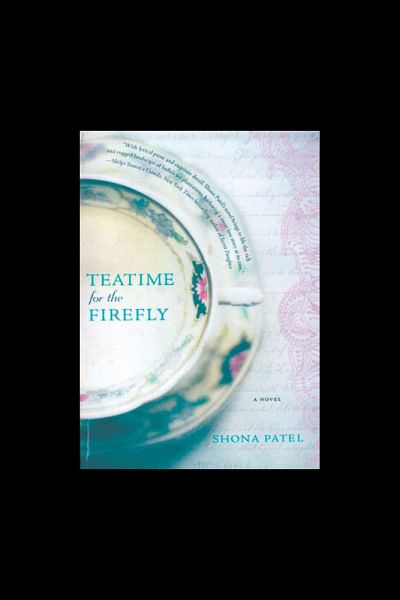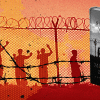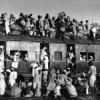On the eve of India partition…

Shona Patel's debut novel, Teatime for the Firefly, can be read as a gripping love story or it could be considered as a Diaspora novel in which the author introduces a new world to people who have lived close to it for years together but could never become a part of it. The work is autobiographical in nature and brings back memories of a time when India was about to be partitioned.
Set in the Aynakhal Tea Estate, in Silchar, Assam, the novel, as Patel told me in my correspondence with her, is also about the life of her own parents who had lived in the estate where her father rose to the position of General Manager. The author, who now lives in Arizona, writes primarily for American readers who know very little about tea plantation in North Eastern India. To these readers the tea industry is not only unheard of but also quite esoteric as they follow the few stories they hear about the British introducing tea plantation in India when they had come across all kinds of challenges leading to premature death of young men and women because of snake bite, malaria and other tropical diseases that were terminal in those days.
Teatime for the Firefly is a realistic novel with a historical tilt because its setting precedes the partition of India by a couple of years. As one goes through the novel it becomes apparent that a country which was the land of both Hindus and Muslims for thousands of years would be bifurcated as the religious identity of the two communities would not allow them to live together any more. The readers can find no reason as to why innocent people belonging to both the Hindu and Muslim communities are victims of unthinking but aggressive rioting and mayhem.
Patel, who has no faith in organized religion, strongly feels that only the Baul philosophy can unite people of both communities who have lived as friends and neighbors for centuries. Mistrust and hatred did not exist until religion was introduced to politics with the intention of dividing India along religious lines.
Married to a Gujarati, Patel's ancestors are from what is now the Habiganj district of Bangladesh. Before India was divided, Karimganj, now a part of Assam was a sub-division of Sylhet; and Silchar, Cachar and Hailakhandi were closely linked to Sylhet and its people in more than one way. Therefore, the setting of the novel will particularly interest Bangladeshi readers who know about Sylhet and what is called the Surma Valley.
The novel is about the love between Layla Roy and Manik Deb. Layla's grandfather Dadamoshai, a great advocate of English education, a Raibahadur and an Anglophile, is a powerful district judge. Manik Deb is a highly educated young man who has qualified for the most prestigious job in the Indian Civil Service which required extraordinary luck along with outstanding qualifications for any Bengali to qualify. Manik's exceptional success quickly gets him engaged to Kona Sen, the daughter of the richest person of Silchar.
When Manik first meets Layla in the Raibahadur's house it's not quite clear if it's love at first sight. Only later the readers can tell why Manik would leave his powerful administrative job and instead choose to work as an Assistant Manager at the Aynakhal Tea Estate which requires a newly appointed Assistant to remain unmarried for three years. Manik accepts the condition and breaks his engagement with Kona and continues to wait for the moment when Layla would become his wife.
To me, Aynakhal Tea Estate is a metaphor for a world unknown to all but only those who work there: the British Mangers and Assistant Managers, the Bengali Clerks known as Babus, and the workers called Coolies. This world is a lot different from the one we live in; for it has its own rules, its own code of conduct, and challenges and dangers that cannot be even thought of by people who live outside a tea estate as big as Aynakhal.
When ultimately Manik marries Layla, after a wait of three years, by exchanging garlands following the Brahma tradition, the Raibahadur's granddaughter gets an opportunity to become a part of this new world which initially shocks her in many ways. Layla, which means night in Arabic, transforms herself into the Chotamemsahib as the glow of the fireflies gradually makes her familiar with the incongruity of the world she has chosen for herself.
Unlike the works of Jhumpa Lahiri or even Zia Hyder Rahman, in Patel's novel there is no travel back to the country of birth after the protagonist decides to settle in the new homeland. The nostalgia for a lost motherland and the struggle to adapt to the culture of the newly adopted country seem to be missing in Teatime for the Firefly if it is read as novel written by an author who belongs to the South Asian Diaspora living in the United States of America
However, Patel's strong longing for the land of her birth and the country of her ancestors transports her, in her imagination, back to the days of her childhood and youth to the land where she had once lived that becomes the setting of her novel. Seen from this perspective, Teatime for the Firefly is also autobiographical containing many attributes common to Diaspora Writing.
After reading the novel I thought Shona Patel's reason for writing Teatime for the Firefly, was to pay homage to her parents, her grandfather, and to a culture that she had left behind many years ago. Like an adult remembering their childhood, Patel by writing this novel also goes back to a period in history which was not only significant to her but also to the whole of South Asia.
An episode in the novel that touched me the most is the journey that Layla Roy makes to the Aynakhal Tea Estate where Manik Deb was profusely bleeding after he was attacked by a wild animal. Layla decides to quickly travel to the Tea Estate where trouble was brewing among the workers. At the same time, in the adjoining township of Mariani Hindus and Muslims were killing each other without any respect for humanity. Layla displays unbelievable courage given the volatile situation in the Tea Estate and in Mariani. It was her profound love that makes the apparently impossible journey a reality. She finds Manik grievously wounded with blood gushing out of his body. I thought this powerful image reflected the serious blood -letting that finally made the division of India a cruel reality.
Shona Patel's novel will definitely be of interest to students and academics that follow the writings of new authors now living in the West but originating in our part of the world. Teatime for the Firefly will also be enjoyed by planters, and people who are related to the tea industry.
The reviewer is Professor of English at University of Liberal Arts Bangladesh (ULAB).

 For all latest news, follow The Daily Star's Google News channel.
For all latest news, follow The Daily Star's Google News channel. 








Comments